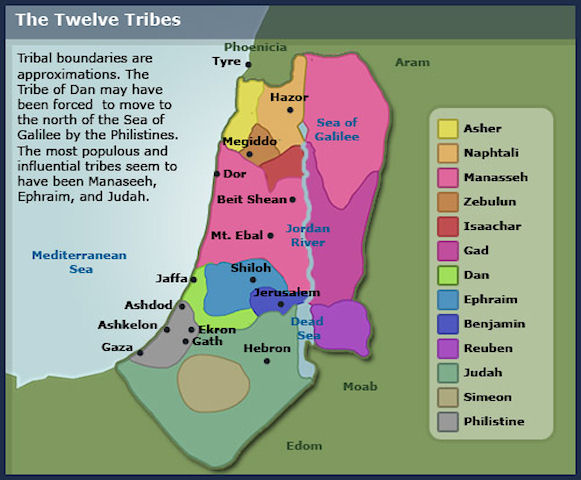Tribes Of Israel Chart

tirbe Patriarch Symbol
- Reuben Reuben Mandrake flowers
- Simeon Simeon Sword or Gate
- Levi Levi Breastplate or Ephod
- Judah Judah Lion
- Dan Dan Serpent or Scales
- Naphtali Naphtali Deer
- Gad Gad Troop of soldiers or tents
- Asher Asher Olive tree or Bread
- Issachar Issachar Donkey
- Zebulun Zebulun Ship
- Joseph Joseph Sheaf of wheat or Palm tree
- Ephraim Joseph Ox
- Manasseh Joseph Arrowhead
- Benjamin Benjamin Wolf
This chart reflects the traditional symbols and characteristics associated with each of the 12,14 tribes, which played a significant role in the history and culture of ancient Israel.
The 12 Tribes of Israel: Problems and Benefits
The 12 Tribes of Israel are foundational to the history of the Jewish people. Each tribe has its own unique identity, strengths, and challenges. Below is an exploration of the problems and benefits associated with each tribe.
1.Reuben
Problem: Reuben’s tribe was marked by instability and lost its birthright due to Reuben’s transgression against his father, Jacob (Genesis 49:3-4). This led to a diminished role among the tribes.
Benefit: Despite losing the birthright, Reuben’s tribe still held a significant position in Israelite society and was known for its numbers and leadership in early battles.
2. Simeon
Problem: The tribe of Simeon was associated with violence and cruelty, particularly in the incident at Shechem (Genesis 34). As a result, it was scattered and absorbed into the tribe of Judah.
Benefit: Despite its violent past, the tribe of Simeon played a role in the settlement of the Promised Land, contributing to the military strength of Israel
3..Levi
Problem: Like Simeon, Levi was also associated with violence. However, the tribe was set apart for religious duties, and its members were not given a specific territory (Genesis 49:5-7).
Benefit: The tribe of Levi was chosen for priesthood, serving in the Tabernacle and later the Temple. This gave them a unique spiritual role and influence over Israel.
4..Judah
Problem: Judah’s tribe faced challenges, including moral failings within its lineage, such as the story of Judah and Tamar (Genesis 38).
Benefit: Judah was blessed with leadership, producing a line of kings, including King David and, according to Christian tradition, Jesus Christ. The tribe held a central role in Israel’s history.
5..Dan
Problem: The tribe of Dan struggled with idolatry and was often at odds with other tribes (Judges 18). Its legacy is mixed, with some traditions viewing it negatively.
Benefit: Dan was known for its role in justice, with Samson, a famous judge, coming from this tribe. It also occupied strategic territory along the coast.
6..Naphtali
Problem: Naphtali’s territory was often subject to invasions, particularly from the north, making it vulnerable to external threats.
Benefit: The tribe was known for its bravery and swiftness in battle. Its territory included fertile land and significant trade routes.
7..Gad
Problem: The tribe of Gad was located on the eastern side of the Jordan River, making it more isolated and susceptible to attacks from neighboring nations.
Benefit: Gad was recognized for its military strength, often leading in battles and protecting Israel’s borders.
8..Asher
Problem: The tribe of Asher sometimes struggled with maintaining its distinct identity due to intermarriage and assimilation with surrounding peoples.
Benefit: Asher’s land was incredibly fertile, and known for producing abundant olive oil, which contributed to the tribe’s prosperity and wealth.
9..Issachar
Problem: The tribe of Issachar was sometimes criticized for being too content and submissive, described metaphorically as a donkey under a burden (Genesis 49:14-15).
Benefit: Issachar was known for its wisdom and understanding of the times, often advising other tribes and playing a key role in decision-making.
10..Zebulun
Problem: Zebulun’s coastal location exposed it to the influence of foreign cultures, leading to potential conflicts and challenges in maintaining Israelite traditions.
Benefit: Zebulun thrived in maritime trade, bringing wealth and economic stability to the tribe. It was also known for its bravery in battle.
11..Joseph (Ephraim and Manasseh)
Problem: The division of Joseph’s tribe into Ephraim and Manasseh led to rivalries and conflicts, particularly with the tribe of Judah. Ephraim was often at the center of political strife in the Northern Kingdom.
Benefit: Both Ephraim and Manasseh were large and prosperous tribes. Ephraim often led in the Northern Kingdom of Israel, while Manasseh occupied extensive and fertile territories on both sides of the Jordan River.
12..Benjamin
Problem: Benjamin’s small size made it vulnerable, and it was nearly wiped out in a civil war with the other tribes (Judges 20-21).
Benefit: Despite its size, Benjamin produced notable leaders, including King Saul and the Apostle Paul. Its warriors were renowned for their skill in battle, especially archery.
Conclusion
The 12 Tribes of Israel represent a diverse array of strengths and challenges. Their individual histories highlight the complexity of Israel’s development as a nation and their collective role in shaping the religious and cultural heritage of the Jewish people. While each tribe faced specific problems, they also contributed unique benefits that enriched the broader community of Israel.



